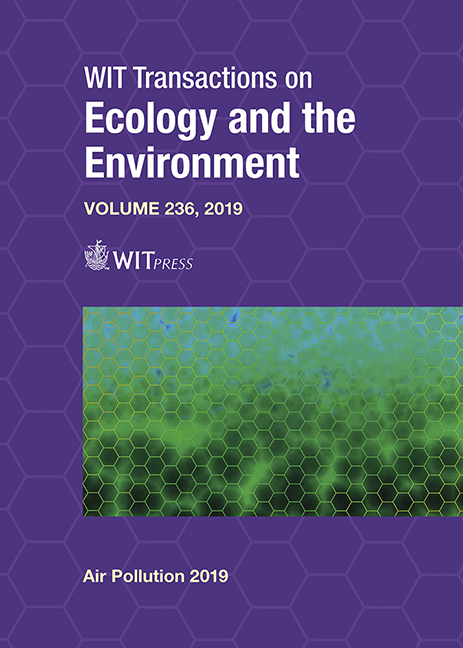CHILDREN’S EXPOSURE TO INDOOR AIR IN SCHOOLS: IMPACT ON WHEEZING
Price
Free (open access)
Transaction
Volume
236
Pages
8
Page Range
205 - 212
Published
2019
Size
270 kb
Paper DOI
10.2495/AIR190201
Copyright
WIT Press
Author(s)
JULIANA P. SÁ, PEDRO T. B. S. BRANCO, MARIA C. M. ALVIM-FERRAZ, FERNANDO G. MARTINS, SOFIA I. V. SOUSA
Abstract
Wheezing is a common symptom in childhood and has been associated with air pollution. Children spend a large part of their time in school, this being the most important indoor environment apart from home. However, studies on the impact of children’s indoor air pollution exposure at schools on respiratory health are scarce. Thus, this study aimed to assess the impact of children’s exposure to indoor air pollution in a total of five urban nursery and primary schools on active wheezing. Multivariate logistic regression models were used to estimate the associations, adjusted for sex, age group (pre-school/primary school) and parental history of asthma. A microenvironmental modelling approach was used to estimate indoor air pollution exposure to each of the pollutants exceeding legislation limit values (CO2, formaldehyde and PM2.5), as the sum of the product of time spent by the child in different indoor school microenvironments and the time-averaged concentration measured in each microenvironment. Measurements were performed in 11 classrooms, two bedrooms and two canteens in Porto, Portugal. A total of 164 completed parent-reported questionnaires derived from the International Study of Asthma and Allergies in Childhood allowed to identify active wheezing (at least one wheeze episode in the previous 12 months) in 16.5% of the studied children. Although not statistically significant, the studied children’s exposure to indoor air pollution in nursery and primary schools seemed to be associated with an increase in the odds of having active wheezing especially for PM2.5 (OR = 1.57,
Keywords
indoor air pollution, nursery and primary schools, children, wheezing





